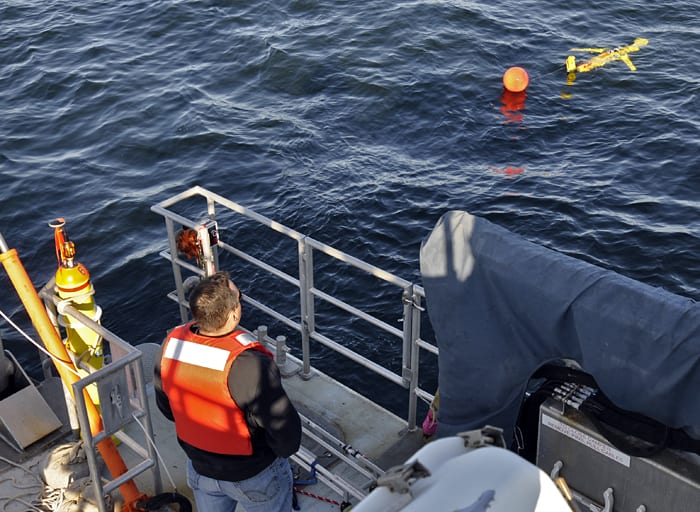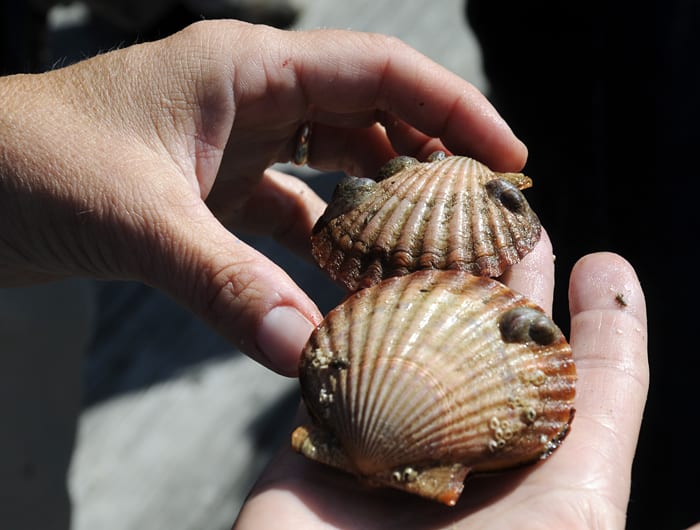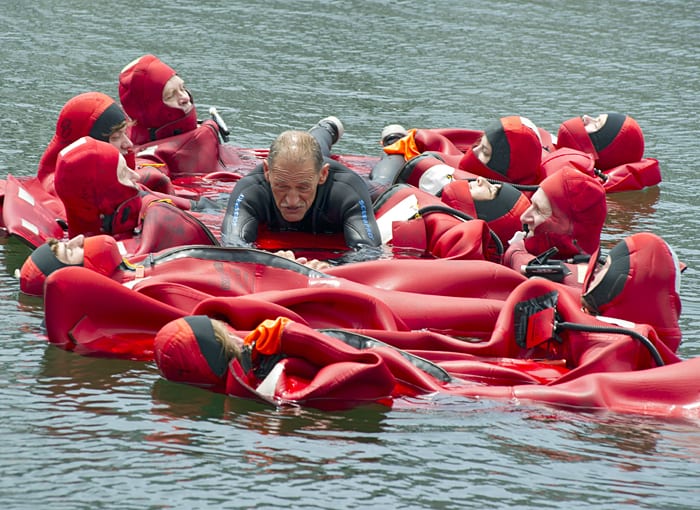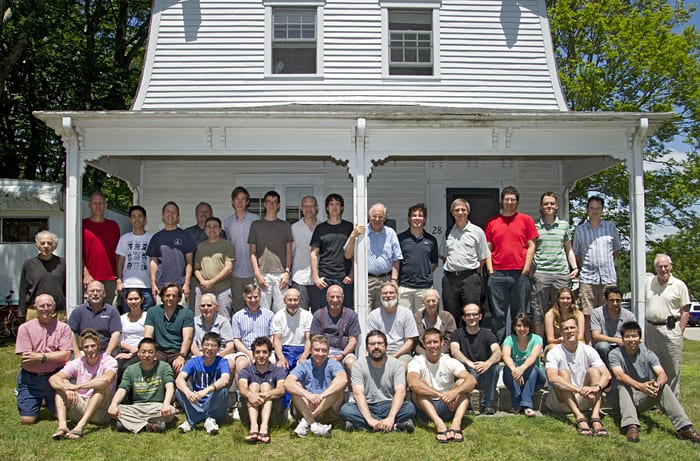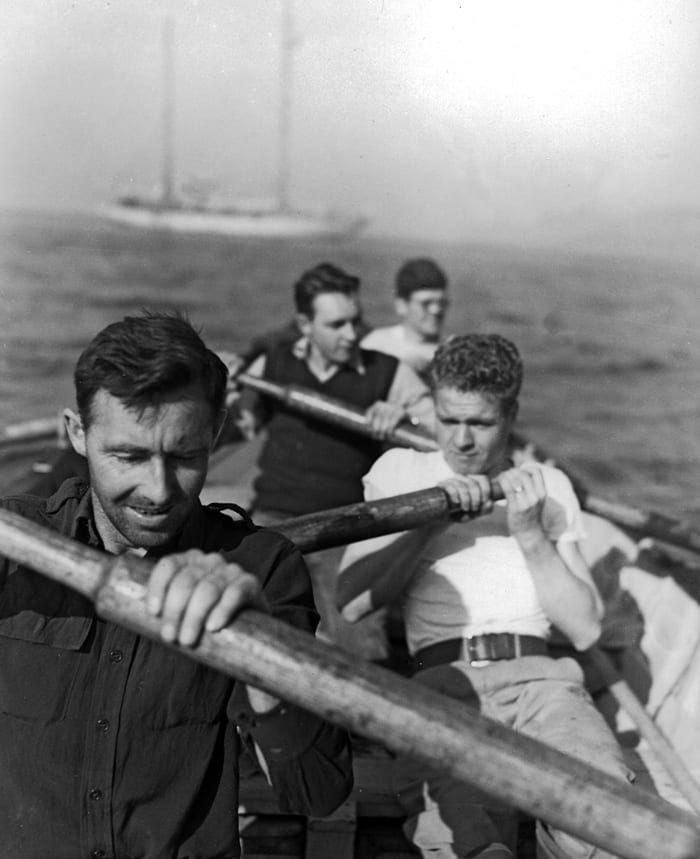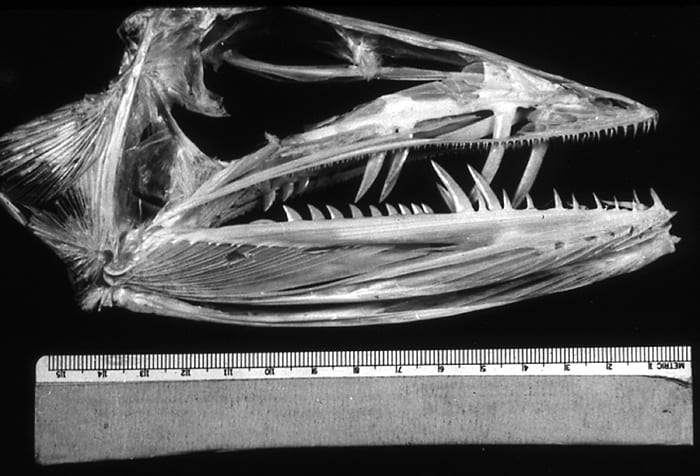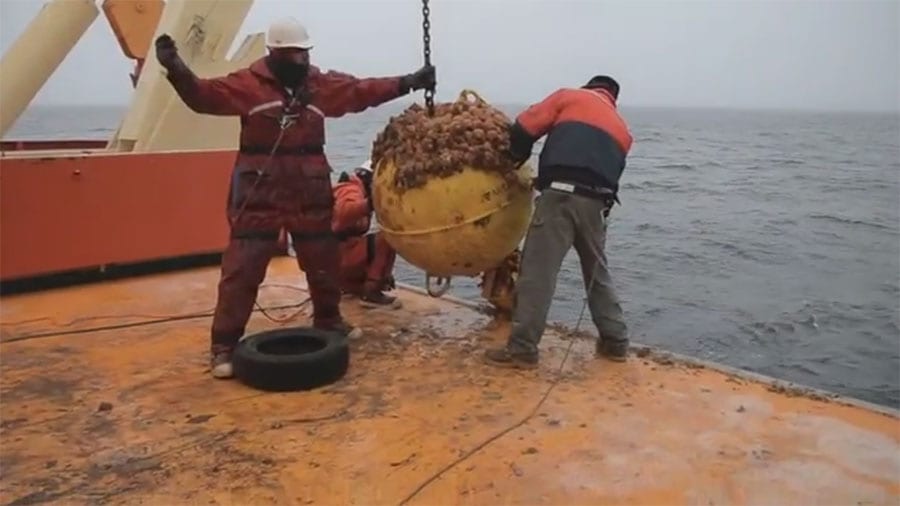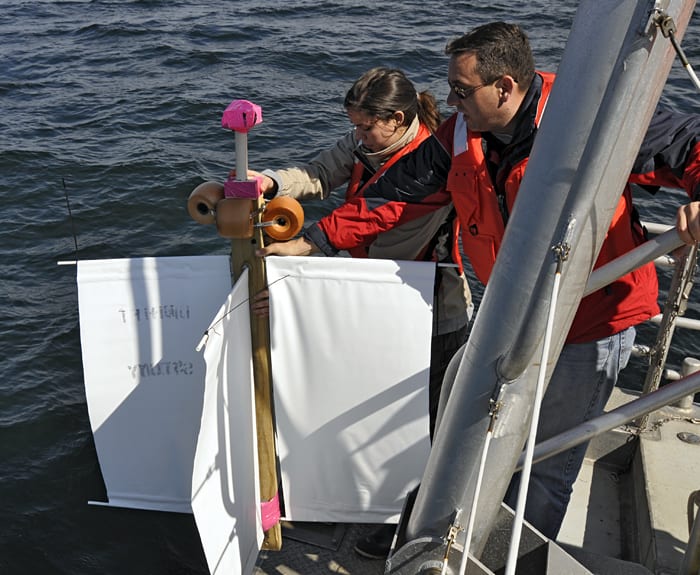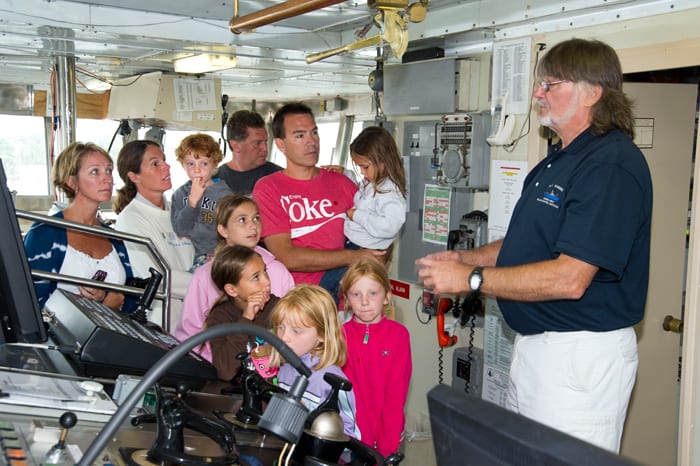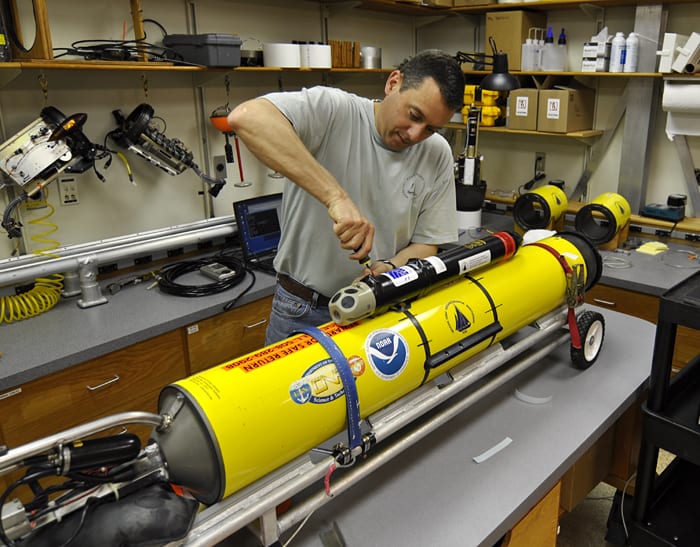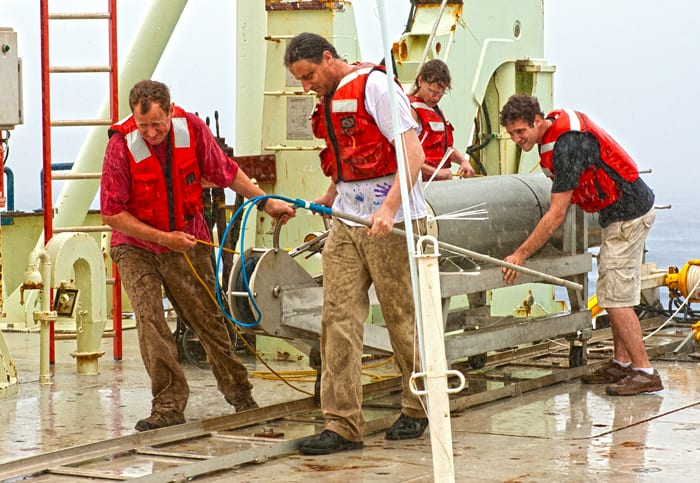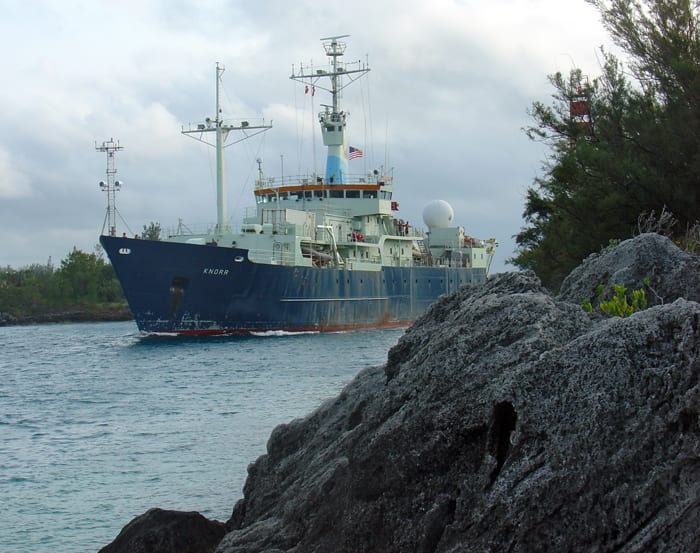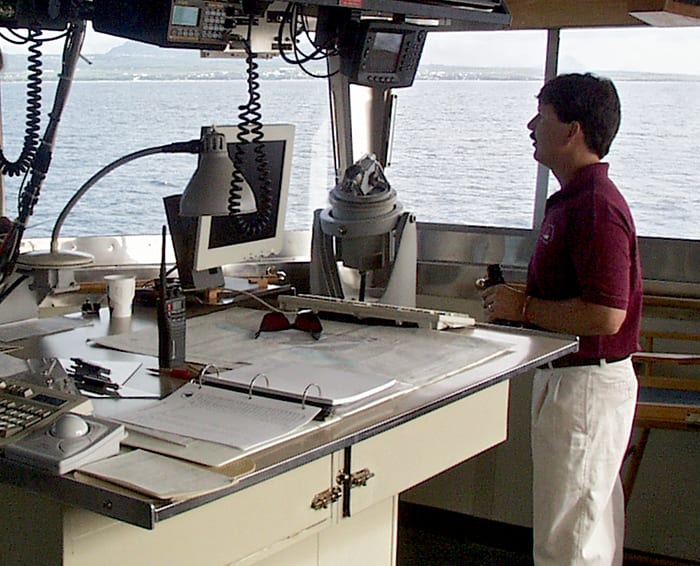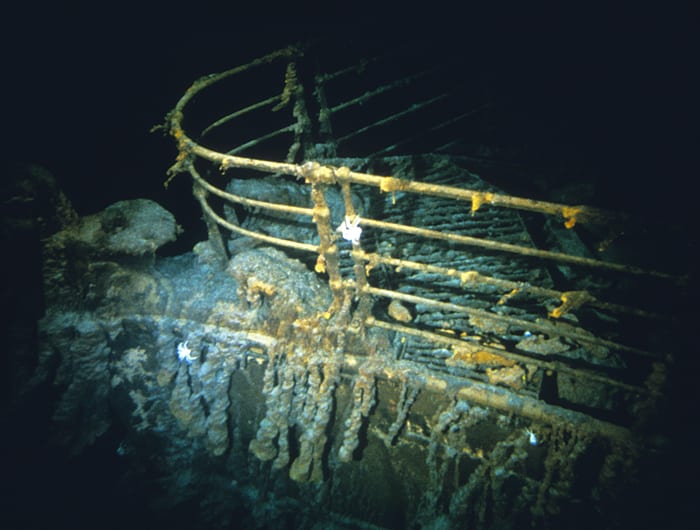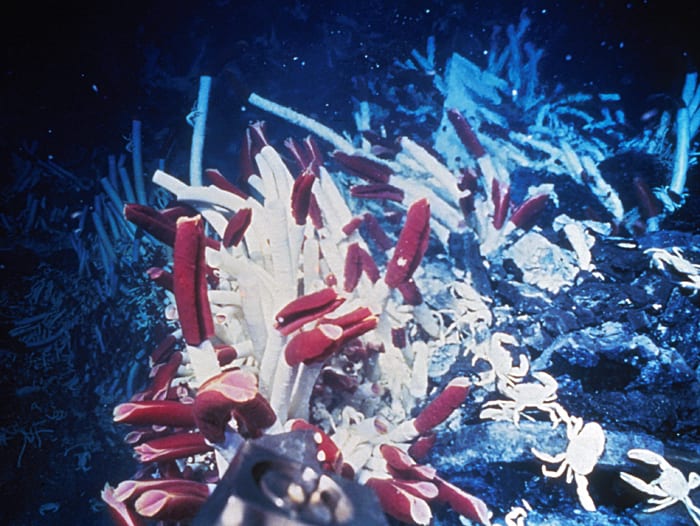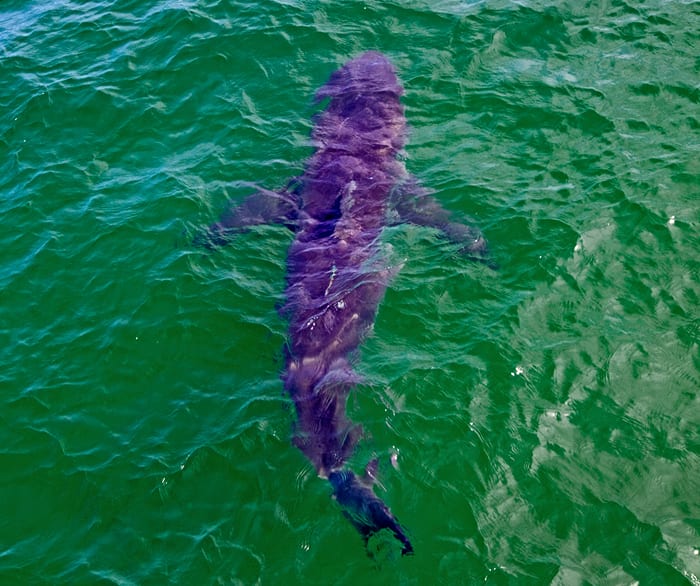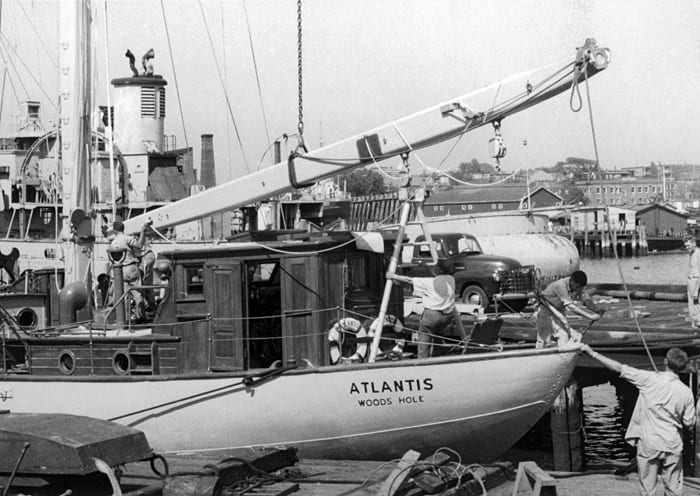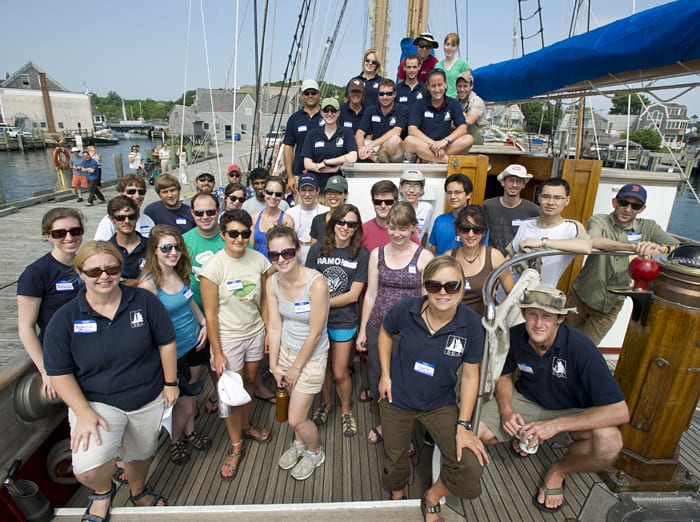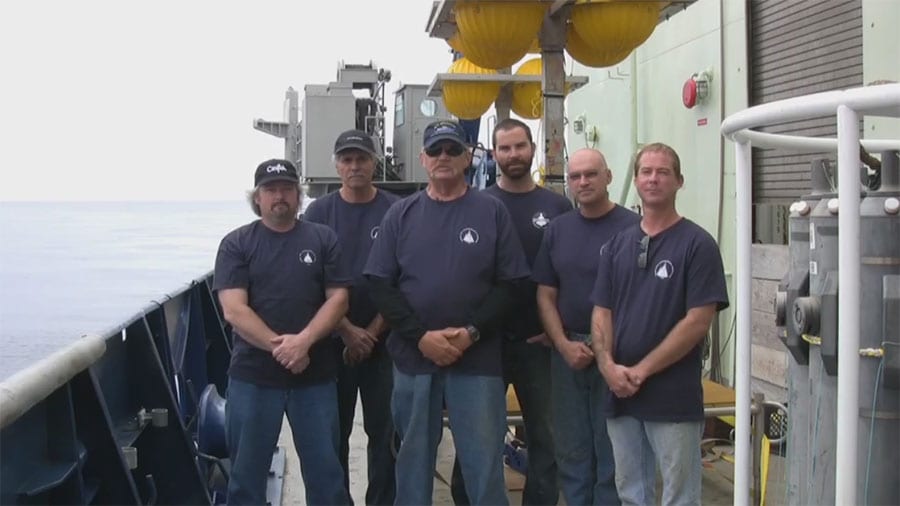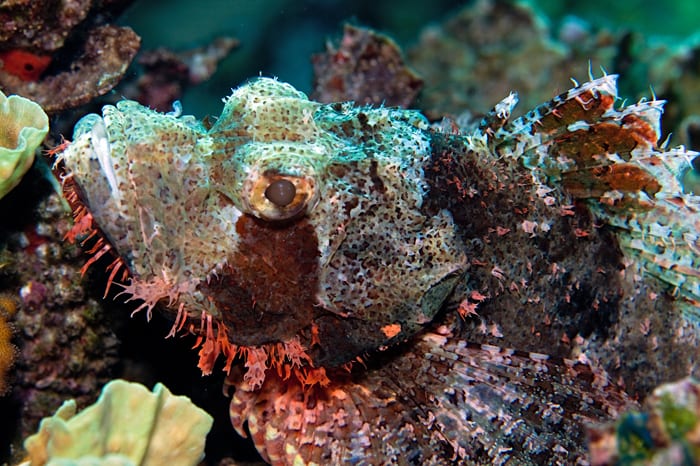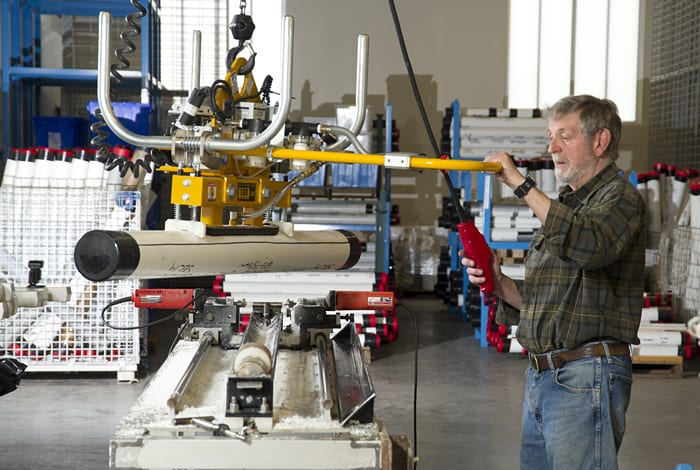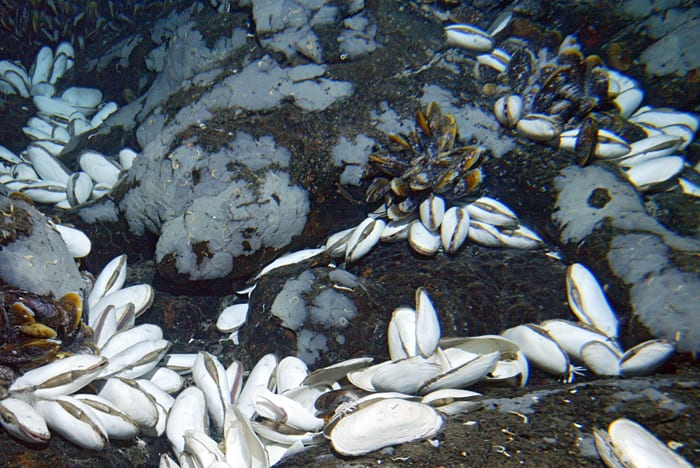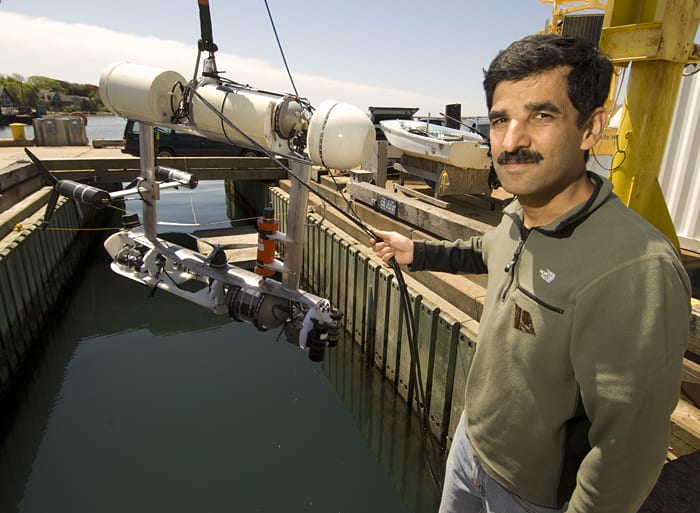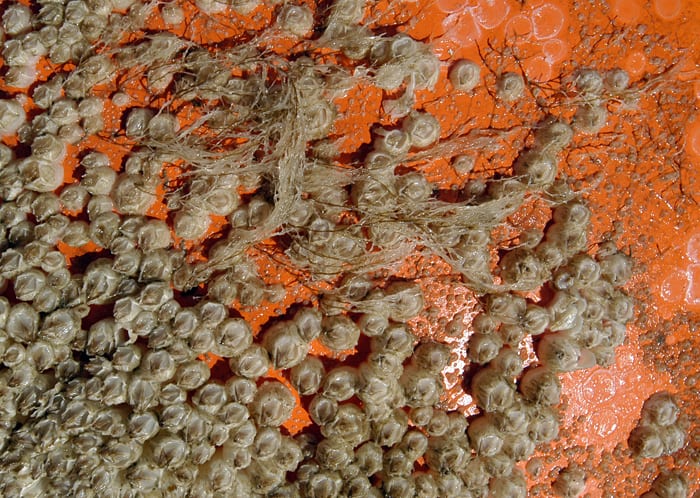Multimedia
Test Driving a Glider
WHOI physical oceanographer Dave Fratantoni watches as a Slocum glider heads away from the ship during a test run. The glider operates without a tether and moves up and down…
Read MoreTwo in the Hand
The two-bay scallops shown here are bivalves, which is the common name for marine and freshwater molluscs. The raised annual growth rings indicate these scallops are at a harvestable age.…
Read MoreTen-Person Raft
Students in the small boat safety class at WHOI form a raft for their instructor, Joseph Mokry of Ocean Rescue Systems. The students are wearing survival suits designed to keep…
Read MoreFluid Fellows
Participants in the 2011 Geophysical Fluid Dynamics Program gather for a 10-week research program, which has been in existence at WHOI since 1959. Each group is made up of graduate…
Read MoreAll Together
Members of a 1947-48 cruise row back R/V Atlantis to the (visible in the background). The primary purpose of the six-month “Med Cruise” was to prepare bathymetric charts of the…
Read MoreFearsome Fish
Skull of the deep-sea lancet fish, Alepisaurus ferox. In the early years of using moored instruments to gather information about the ocean, many moorings sustained gashes that some researchers attributed…
Read MoreThe Ghost Mooring
Hear how WHOI recovered a decade-lost mooring.
Read MoreGoing Adrift
Sophia Merrifield, a student in the MIT/WHOI Joint Program, prepares to deploy a surface drifter with the help of WHOI physical oceanographer Dave Fratantoni about 20 miles off the tip…
Read MoreKnorr Tour
Loading Up
WHOI physical oceanographer Dave Fratantoni prepares a Slocum glider for deployment on a research mission (in this picture, the glider’s wings have been removed). The glider moves up and down…
Read MoreDynaMITE Images
Research engineer Fred Thwaites, associate scientist Kurt Polzin, research specialist Ruth Curry, and engineer Kevin Manganini (left to right) recover a High-Resolution Profiler onboard R/V Knorr during the month-long DynaMITE…
Read MoreTour the Knorr!
Take advantage of a unique opportunity today, August 7, to tour the global class research vessel R/V Knorr. Rain or shine, the public is invited to Woods Hole, to learn…
Read MoreCaptain at Work
Former captain of R/V Knorr and current captain of R/V Atlantis, A.D. Colburn, is shown at work on the bridge of the Knorr. Captain Colburn commanded the ship for 10…
Read MoreReaching Titanic
On September 1, 1985, scientists working on board the R/V Knorr captured the first photographs of the wreck of the RMS Titanic in the North Atlantic beneath more than 12,400…
Read MoreGame-Changing Discovery
In 1977 during dives to the Galapagos Rift in the East Pacific, a team of geologists working aboard R/V Knorr and Lulu, the support ship for the submersible Alvin, see…
Read MoreSharks on Cape Cod
This white shark was spotted off Chatham during a tagging cruise in 2010.During the last few summers the number of white sharks on Cape Cod appears to have increased. The presence…
Read MoreRe-fitting Atlantis
A work crew fits the boom to R/V Atlantis‘ new mizzen mast in this undated photograph from the Munro Shipyard in Chelsea, Mass. Atlantis served as WHOI’s globally ranging oceanographic…
Read MoreReady to Set Sail
A group of graduate students in the MIT/WHOI Joint Program gather on the deck of the (SSV) Corwith Cramer alongside the ship’s crew for the start of the 2011 Jake…
Read MoreAtlantis to Atlantis: Well Done
The science party and crew of R/V Atlantis send a special message to the crew of the space shuttle Atlantis.
Read MoreSteer Clear
A tassled scorpionfish (Scorpaenopsis oxycephala) lies camouflaged on a coral reef in Kimbe Bay, Papua New Guinea. These carnivorous fish—known for their venomous spines—often wait in disguise for prey to…
Read MoreFirst Cut
In the WHOI Core Lab, retiree and volunteer George Heimerdinger moves a length of sediment core encased in PVC pipe to the core splitter, where the PVC will be split…
Read MoreOnce More Unto the Rift
Giant clams up to one foot long thrive in the crevices around seafloor pillow lava, which vent hydrothermal fluids with chemical nutrients. This vent site in the Pacific on the…
Read MoreMapping the seafloor
Autonomous under water vehicles (AUVs) have become an ever present tool used by oceanographers. Here ocean engineer Hanumant Singh, tests SeaBED, the autonomous underwater vehicle (AUV) designed and built by…
Read MoreBarnacle Buoy
Instruments, buoys, and rigging lines placed in the sea attract a wide variety of organisms. After 13 months in the Chukchi Sea north of Alaska, this orange float sported a…
Read More
